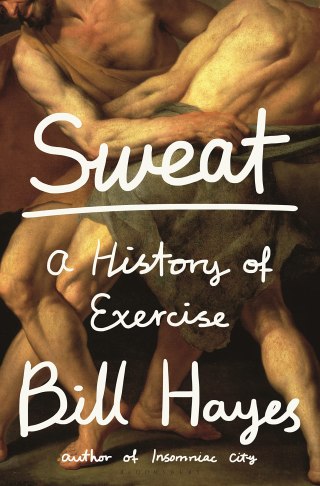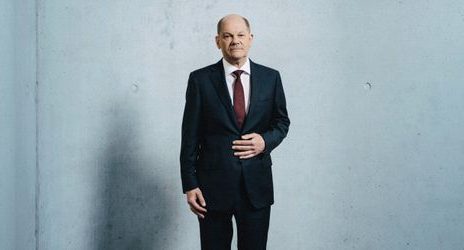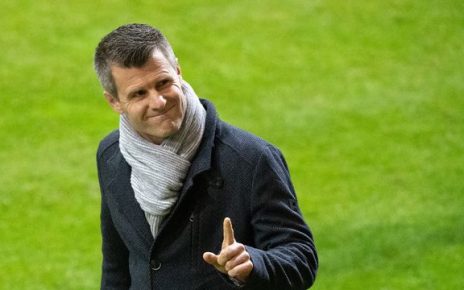“A history of exercise is not really — or certainly not only — a history of the body. It is, equally, perhaps even primarily, a history of the mind.”
“And if the body were not the soul, what is the soul?” wondered Whitman two years before he wrote a manual on “manly health and training” and two decades before he recovered from his paralytic stroke with a rigorous exercise regimen in the gymnasium of the wilderness.
But this natural equivalence, as obvious as it was to Whitman and as evident as the neurophysiology of consciousness is making it in our own epoch — was opaque, even obscene, for much of human history.
The world’s first known book on exercise was written almost exactly two millennia ago, sometime in the 220s, by the Greek philosopher and teacher Flavius Philostratus, then in his fifties. In On Gymnastics, he argued that athletic training is an art and “a form of wisdom,” on par with the other arts, no less beautiful or substantive than poetry or music. His treatise was in part an act of resistance to the wave of oppression and erasure sweeping in with the new regime of Roman rule and the advent of Christianity, which was beginning to eradicate the ancient Greek culture of Olympic Games and casual athletics, of public bathhouses and gymnasia.
Under Christian doctrine, the body was too sinful an instrument to be afforded public celebration or private homilies. The cerebral solemnity of the cathedral replaced the joyful physicality of the gymnasium, where crowds had once gathered as much to tone their bodies as to hone their minds on Plato and Aristotle’s philosophy lectures. (The one place where Christianity and ancient Greek culture converged was that women were not permitted to compete in the Olympic Games or enter the gymnasium — even though the athletic Plato, outlining the laws of civilization in his last and longest dialogue, decreed that “women, both young and old, should exercise… together with the men” — and, to this day, women are not permitted to sing in the Vatican choir or hold major leadership positions in the Catholic Church.)
Group Apparatus by Alice Austen, 1893.
And so it is that the notion of exercise fell out of the popular imagination for a millennium. The word itself did not enter the English language until the fourteenth century, when it was originally used in the context of animal farming and husbandry, meaning “to remove restraint.” Like the etymological evolution of “to lose,” “to exercise” came to encompass other contexts beyond the literal and the physical: one could exercise restraint, or altruism, or caution. But not one’s body — not yet.
And then, in the sixteenth century, while roaming the ruins of Greek and Roman gymnasia, an Italian physician named Girolamo Mercuriale (September 30, 1530–November 8, 1606) took it upon himself “to restore to the light the art of exercise, once so highly esteemed, and now plunged into deepest obscurity and utterly perished.” Far ahead of his time on both the scale of a lifetime and the scale of civilization, Mercuriale was only twenty-two when, writing a treatise on parenting, he made a passionate case against the prevalent use of wet nurses, insisting instead that breastfeeding by mothers made for healthier and happier children. His work inspired the world’s first formal proposal for physical education in school curricula, made by the English educator on whom Shakespeare modeled the schoolmaster in Love’s Labor Lost.
Girolamo Mercuriale. (Copperplate engraving by Johann Theodore de Bry, 1650.)
But Mercuriale’s most lasting legacy was the 1573 book De Arte Gymnastica, or The Art of Exercise. (Incidentally, in my native Bulgarian, the academic term for gym class translates verbatim to “physical art.”) On its pages — writing in an elaborate form of medieval Latin that only a handful of scholars can translate today — Mercuriale resolved:
I have taken as my province to restore to the light the art of exercise, once so highly esteemed, and now plunged into deepest obscurity and utterly perished… Why no one else has taken this on, I dare not say. I know only that this is a task of both maximum utility and enormous labor.
If there is one person in the modern world who can reinvigorate Mercuriale’s enormous unfinished labor and bridge the physical, the philosophical, and the poetic — bridge Whitman and Warhol, Plato and Peloton, Kafka and Curie, Tennessee Williams and Serena Williams; bridge the “immediate bodily now” of exercise with “the wisdom of the past that had faded from living memory” — it is Bill Hayes. And so he does, in Sweat: A History of Exercise (public library) — an expedition, both existential and historical, spanning two thousand years and three continents, exploring “how the arts of exercise were invented, lost, and rediscovered,” raising questions about what distinguishes exercise from practice, labor, or sports; about whether, like art forms and literary genres and languages, there are “certain forms of exercise that are similarly endangered or have already gone extinct — unrecorded, undescribed”; questions like:
Do you choose your form of exercise, or does it choose you?
At the heart of Mercuriale’s work, written in a world of pre-scientific almost-medicine, was his exultant fascination with “how utterly mysterious — and therefore miraculous — the human body could be,” as Hayes puts it four and a half centuries later, animated by the same exultant fascination as he undertakes his biography of an idea: this ancient yet perennially strange idea that our lives unfold inside bodies in motion across space and time, dragging mind and spirit along for the ride. What emerges is a lovely fusion of the scholarly and the sensual, the personal and the universal, the playful and the poignant, radiant with Hayes’s delight in the elegant machinery of our bodies and the minds they carry — that transcendent place where physiology and psychology converge to produce something best described as spiritual.
Ancient tomb painting of divers in Tarquinia, Italy.
He writes:
A history of exercise is not really — or certainly not only — a history of the body. It is, equally, perhaps even primarily, a history of the mind — of will, desire, self-discipline — for one cannot get exercise without an intentional wish, a motivation, a reason, to do so.
Just as neuroscience is now revealing how somatic feeling might have given rise to complex consciousness, and not the other way around, Hayes follows evolutionary theory to its pleasantly unsettling intimation that the athletic use of the body may have fomented the development of brain size and cognitive capacity in early humans, and not the other way around.
To reveal the evolutionary and cultural history of the body as so deeply intertwined with the mind is to face afresh our limited and limiting standard model of intelligence. With an eye to Plato, who believed that the body and the mind should be harmonized and cultivated with equal devotion, he writes:
As one can see most obviously in gifted athletes and performers, the body itself can be a source of knowledge — coordination, grace, agility, stamina, skill — both intuitive and learned. Indeed, there are a rare few who might be called Einsteins of the body — geniuses at inventing, expressing, and employing movement. Is that not what the choreographer Mark Morris is? Or Serena Williams?
Ancient fresco of young boxers in Akrotiri, Greece.
Woven into the cultural history is Hayes’s personal history — growing up with five sisters and a hyperathletic father who had once been captain of the West Point swim team; learning boxing at a gym that had once been a used bookstore he frequented with his partner until his sudden death of a heart attack, young and strong, in the middle of the night in their bed in San Francisco; starting his life over in New York, where he becomes one of the city’s foremost street photographers and falls in love again — with the irreplaceable Oliver Sacks, whom Hayes memorialized in his splendid previous book and whose loving memory haunts this one, particularly the chapters on swimming. But even Hayes’s bereavement — which occasioned his break with exercise after a lifetime of devotion, which in turn occasioned his interest in the history of how the body and the soul entwine in the act of exercise — is radiant with love:
This whole phase, this breakup that exercise and I had, started not long after I lost Oliver, who died at eighty-two in August 2015. We used to swim together two or three times a week — usually a mile-long swim at a nearby pool—sharing a lane and often splitting a weekly session with a swim coach. We swam wherever we could — in cold mountain lakes, in salty seas, and in New York’s overchlorinated public pools. We swam at elegant hotels in London and Iceland, Jerusalem and San Francisco. We went scuba diving in Curaçao and St. Croix. One of the funniest memories I have is of swimming with Oliver in the huge public pool in Central Park on a steamy hot summer night — so hot that the pool was jammed with swimmers, kids, families, New Yorkers. The few lifeguards on deck were frantically trying to impose some order, keeping boys from cannonballing or dive-bombing, their whistles blaring above the din. But it was a lost cause, more like swimming in Times Square. And there in the middle of it all was Oliver, half-blind but indomitable, trying to do laps as I swam right beside him, his stressed-out bodyguard.
Cave painting of swimmers in the Western desert of Egypt.
Hayes approaches his history of exercise with the same total and indomitable devotion, diving as ardently into archives as into mountain lakes, trailing rare book librarians and training with boxing champions. Along the way, he encounters a cast of wondrous characters, dead and alive: an elderly retired schoolteacher in Kansas City with one good eye and the excellent name Miss Irene Blasé, who spent years translating Mercuriale’s works into English for the first time, four hundred years after they were written, and died at ninety a year before her labor was published; an archivist at the Academy of Medicine in East Harlem, part “twenty-first century Minerva” and part dandelion with her tall slight frame “crowned by a nimbus of pewter gray,” who shepherds Hayes’s first encounter with Mercuriale’s original work in a rare surviving volume “the weight of a small dumbbell or a large human brain”; a very English elderly historian of medicine and former Cambridge don “with the aspect of a majestic bird” and the excellent name Dr. Vivian Nutton, who rings six-hundred-pound church bells for exercise; a very French elderly scholar of Mercuriale’s work, obsessed with American pop comics and the question of what it means to have a body, who had been raised Catholic, then traveled to India to study yoga and meditation with the masters and to America for encounter groups and primal scream therapy; legendary chef Alice Waters, who tells him during a chance encounter in Rome that she wakes up at 7 each morning and goes for a 45-minute walk no matter where she is and no matter the weather — her miniature act of resistance to humanity’s lost association between “exercise and manual work, exercise and nature”; Ruth Bader Ginsburg who, in her eighties, staggers him with the matter-of-fact report that she does twenty push-ups every day; an enormously tall man with long hair and a bushy beard, who looks like a time-traveler from the Middle Ages and who hand-delivers to him, at the majestic redwood reading table of a French library, the three-foot rare book he had voyaged there to see.
Wrestlers from De Arte Gymnastica by Girolamo Mercuriale, 1573.
Over and over, he perseveres over the militant boredom of the bureaucrats who are so often the keepers of the keys to the reliquary of culture, so often more wardens than stewards of scholarship. The archetype culminates in an apathetic French public librarian who, looking down at the printout of his research query, looks up at him with sour skepticism and issues the bored indictment Why? before giving him vague directions to some other office. (There is hardly a burn more painful to your research passions than a librarian’s imperious dismissal of your query — I say this with the scorched surety of both a frequent archive dweller and the daughter of a defected librarian.)
Walking the seemingly infinite empty corridors of the Parisian public library and getting nowhere, Hayes thinks about Aristotle’s reckoning with the physically fatiguing effects of infinity, then distracts himself from “the vaguely existential meaninglessness” of his project by making the act of walking itself part of the investigation. (This might be what separates great minds from lesser minds, or perhaps just artists from non-artists — what occasions boredom or frustration in some occasions curiosity and a quickening of creativity in others.)
An epoch after Nietzsche contemplated the relationship between walking and creativity and a generation after Thomas Bernhard observed that “there is nothing more revealing than to see a thinking person walking, just as there is nothing more revealing than to see a walking person thinking,” Hayes details the embodied poetics of our most primal propulsion:
One might consider walking the simplest of exercises. But this is hardly so, as someone who has to regain the ability to walk would certainly know. Some two dozen major muscles of the lower body are involved in every cycle of walking — a cycle being the split — second from the contact of one foot on the ground to the next contact of the same foot. And far more is happening than simply forward locomotion. A physical therapist once put it to me this way: “Think of walking as a series of aborted falls.” The muscles of the hips, legs, and feet are just as involved in keeping one from collapsing as they are in keeping one moving. The hamstrings — the long powerful muscles behind the legs — are chiefly responsible here. They reach their peak of activity as they “arrest movement” at the hip joint at the moment the heel strikes the ground. The quadriceps femoris — the bundle of four muscles otherwise known as the thigh — then begin to contract to control the load being imposed on the knee joint by the body.
Queen Hatshepsut performing the ritual run of the Egyptian jubilee celebration, designed to reaffirm the divine powers of the ruling pharaoh, male or female.
But no poetry of motion has reverberated through the hallways of history and the human bodymind more powerfully than walking amplified. “Running is supreme,” Mercuriale had declaimed in his treatise, and so Hayes picks up the declamation as both spiritual incantation and scientific inquiry:
I make this my mantra:
Running is supreme, I think, as I wait for a light to change green in front of my building.
Running is supreme: as I dodge cars and dogs on leashes and bicyclists on the sidewalk.
Running is supreme: as I reach the Hudson and head down the West Side of Manhattan on a smoothly paved path.
What made running supreme in Mercuriale’s mind was not only that it met the definition for exercise he carefully laid out in his book, but that it is “granted to all.” Anyone is capable of doing it — man, woman, child. One doesn’t need a gymnasium. One doesn’t need equipment or an opponent. (Not even shoes are necessary, some today say, following the longtime practice of the Tarahumara Indians of Mexico, although ultimately one’s feet may disagree.) One needs only healthy lungs and a pair of reasonably strong legs. I am acutely conscious of mine as they run, how they do this automatically. But I also find myself enjoying willing them to do what I like, as if I were driving a car. I take a right and run to the end of a pier. I run backward, then forward, and then steer back to where I began. I never look down. Each of my feet will touch the ground a thousand times, at least, perhaps twice that, for every mile I cover, while absorbing three times my body weight.
This exquisite automation is a hard-earned, long-honed gift of evolution. Although many animal species are bipedal, very few others can walk or stand upright at all, and almost none of them can run for more than an awkward teeter across a short distance. The human body owes its gift of running largely to women: its upright spine evolved to alleviate the weight distribution of pregnancy and its wider hips to make childbirth safer for both mother and infant as an increasingly large cranium, housing an increasingly powerful brain, had to pass through the birth canal.
Fourth-century mosaic on the floor of a Roman villa.
In a passage evocative of Alison Bechdel’s kindred-spirited masterpiece of personal and cultural history, Hayes details the science behind the elaborate symphony of aliveness that plays itself through us when we partake of this deceptively simple activity:
When one is running, time passes differently. I can get from here to there quickly — quickness is embodied, experienced — and I can keep going. I will run until I feel tired, until I’ve had enough, and then I will go just a little farther, at which point a wave of well-being-ness washes over me. This is not coincidental. My brain is rewarding me for doing something grueling that is beneficial to my overall health — and providing an incentive to do it again. Sustained activity triggers the release of specific neurochemicals, endorphins, which have a kind of tranquilizing effect. On top of that, the body gets a deposit of human growth factor, a repairer of muscle tissue, as well as specialized proteins that, according to new research, are involved in the creation of neurons and the connections between them, synapses.
Then there is the evolutionary glory of sweat — a development so miraculous that Hayes takes it for the title of his book; a development enveloped in a cautionary cultural history of how religious dogma has repeatedly stood in the way of science, which is the way of knowledge and wonder. Under the longstanding prohibition of cadaver dissection by the major religions, the true mechanism of how and why we sweat remained a mystery. Instead, there were ample theories — all spectacular, all wrong — by some of humanity’s most curious and visionary minds: Plato and Galen, Hippocrates and Avicenna, and Mercuriale himself, who . It was only after the discovery of sweat glands — the structure of which Hayes poetically likens to “the stem of a tiny hydroponic flower turned upside down,” and which form by the millions in utero — that sweat was revealed to be the great thermostatic regulator of our precarious homeostasis.
Marilyn Monroe working out. (Photograph by Philippe Halsman, 1952.)
Radiating from his chronicle of the history and science behind the varieties of physical activity we now call exercise is a reminder that every form of movement is tethered to the corpus of culture by an invisible chainlink of values and assumptions, permissions and prohibitions; that every exercise — from the commonest to the most esoteric — reflects the body politic and emanates an ethic of thought.
There is dueling, once condemned by the church and punished with excommunication, which evolved into an art — the art of fencing, now both an Olympic sport and an intellectual exercise celebrated as “physical chess.”
There is yoga, an ancient Indian practice on which a nineteenth-century Swede based his system of mass group exercise, which was then adopted by the British Army during its colonial occupation of India.
There is bicycling, which vitalized women’s political and personal emancipation.
Cover art from Maria Ward’s 1896 manifesto Bicycling for Ladies. (Available as a print and as stationery cards.)
These hidden histories, and the myriad invisible cultural forces and scientific phenomena behind the way we exert our bodies, come alive in Sweat, which blends personal memoir and the biography of a scientific idea with the same humanistic enchantment Hayes brought to his earlier book on sleep. Complement it with a pictorial history of athletic women and the great Buddhist teacher Sylvia Boorstein’s guide to mastering the ancient bodymind art of walking meditation, then revisit the uncategorizable kindred wonder that is The Secret to Superhuman Strength.
donating = loving
For a decade and half, I have been spending hundreds of hours and thousands of dollars each month composing The Marginalian (which bore the unbearable name Brain Pickings for its first fifteen years). It has remained free and ad-free and alive thanks to patronage from readers. I have no staff, no interns, no assistant — a thoroughly one-woman labor of love that is also my life and my livelihood. If this labor makes your own life more livable in any way, please consider lending a helping hand with a donation. Your support makes all the difference.
newsletter
The Marginalian has a free weekly newsletter. It comes out on Sundays and offers the week’s most inspiring reading. Here’s what to expect. Like? Sign up.





